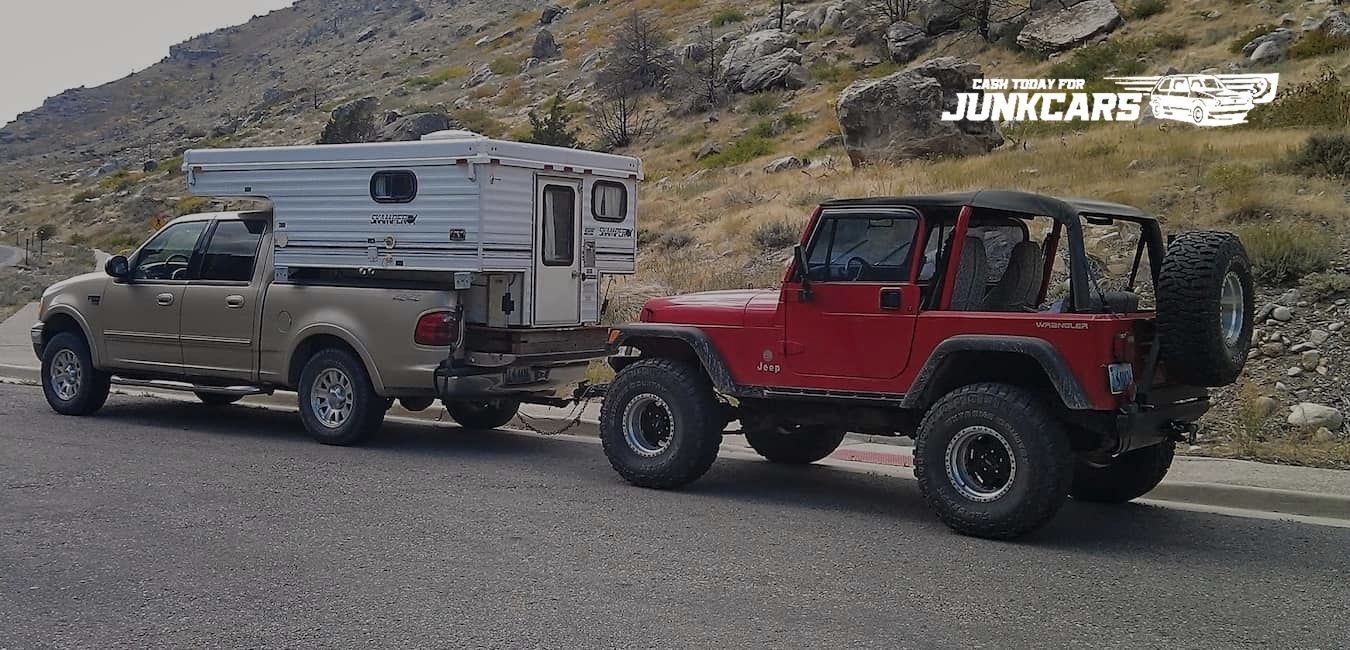One might face a need to flat tow vehicles once in his lifetime. But to know what is flat towing truly you might need to stick around with us. A flat tow, also known as flat towing, is a method of pulling a car along with all four wheels on the ground. Flat towing is also known as a dinghy, neutral, or four-wheel towing.
It’s a standard method of towing automobiles or four-wheel drive vehicles following huge flat bed tow trucks or campers. To hook another automobile to your truck or RV, you need a lesser set of tools for a flat tow. When contrast to other towing techniques, the amount of effort required to establish a flat tow is very modest.
Now, what is flat towing or Flat Tow Vehicles? Flat towing is a reasonably straightforward approach for towing a car because you don’t need to acquire or set up trucks or dollies. A flat tow kit would include most of what you will need to execute a flat tow, providing you with a car that can be securely flat towed.
There are three methods of towing a vehicle and they are as follows:
- Trailer towing
- Tow dolly towing
- Flat towing
As an option for transporting another car on a journey, flat tow vehicles have several significant benefits. There are certain limitations to this strategy as well, to the point that trailer or dolly towing are still the most preferred methods for pulling a car.
Contents
Flat Tow Vehicles – Things To Know
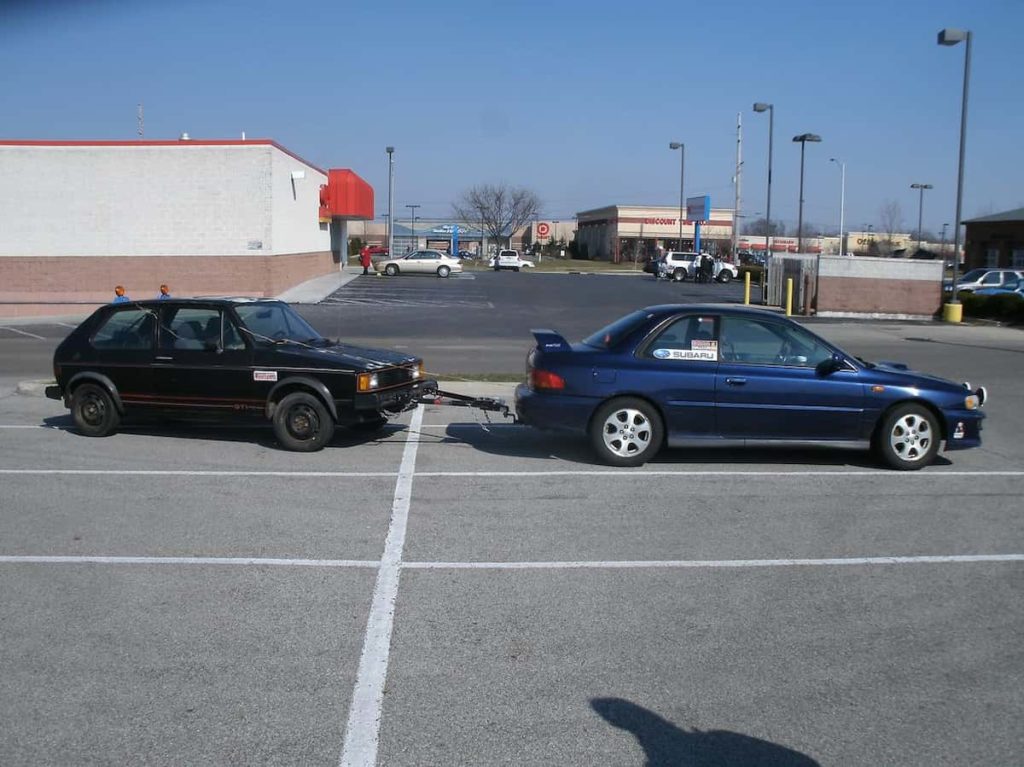
When you have flat tow vehicles, sometimes known as a “toad,” with you, you don’t have to start packing all your belongings and ensure it’s securely stowed within the RV each time you would like to go someplace.
A car can be pulled in one of two methods. The first choice is a tow dolly with two or four wheels. You can tow practically any vehicle with this towing, and however, it is not widely known. The second alternative, flat-towing, eliminates the need for a dolly because all four wheels are on the ground.
This second technique is favored; however, keep in mind that not all automobiles are flat tow vehicles. Flat-towing is possible with any automobile that has a manual gearbox.
However, if the car has an automatic gearbox, which is becoming more common, you’ll have to understand whether flat-towing is an alternative.
According to Roaming Times, this knowledge is easily accessible in a vehicle’s customer’s handbook. It also suggests determining what sort of car you want to tow to reduce your possibilities and save having to go over thousands of customer manuals.
Check To See If Your Vehicle Is Approved For Flat Tow Vehicle
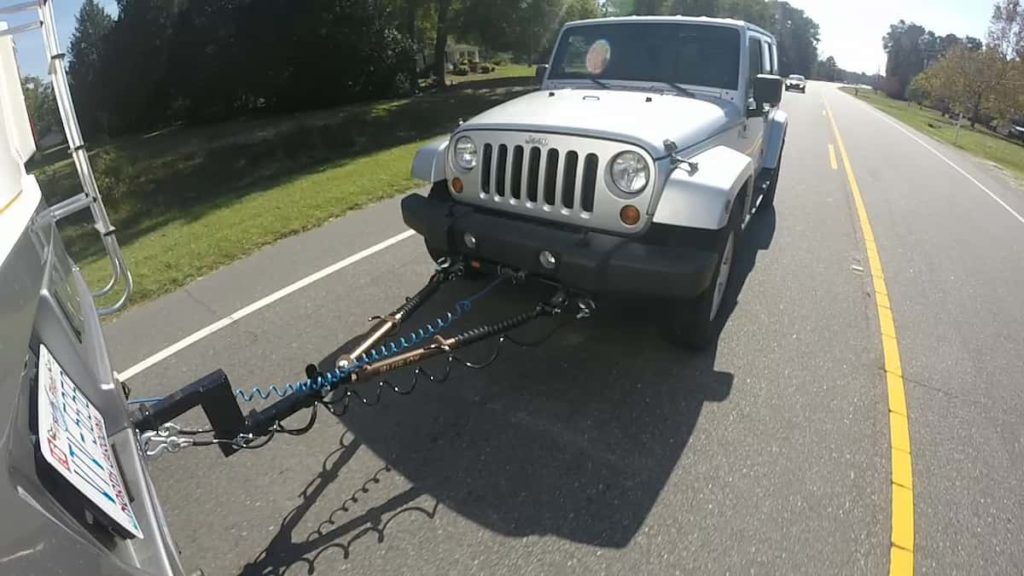
The most crucial aspect to watch for when selecting a vehicle is that it is a factory authorized for flat towing.
To do so, first estimate your vehicle’s max towing capacity, then identify which cars fall inside that capacity (this isn’t the only factor to examine, but it will assist in restricting the selection).
Remember to consider the weight restriction of your vehicles’ trailer hitch receiver. A four-passenger small vehicle to a medium to big SUV or sport truck may be towed by most RVs.
The great news is that most vehicles that can be flat towed ride so perfectly that many people don’t even notice they’re present. This is particularly true for manual front-wheel-drive (FWD) cars and many manual four-wheel-drive (FWD) cars, which have the extra benefit of being one of the lightweight vehicles.
Specific measures must be taken while towing certain autos. For example, you may have to turn the motor every 200 miles or so to pump the gearbox fluid and avoid drivetrain harm. It’s also possible that you’ll need to keep the ignition system in the mode that releases the steering wheel.
Simply put, this can considerably deplete your batteries after a long day of towing. Luckily, most automobiles may avoid this by simply disconnecting one or more circuits from the vehicle’s junction box before hauling.
Check That You Have The Appropriate Connection Devices
A robust, professionally built, and fitted link connecting your RV and your flat tow vehicles is among the most critical parts of your towing solution. Your hitch receivers, tow bars, and baseplates are the essential components of linkage equipment.
Receivers For Hitching
Examine the ratings of your hitch receiver to ensure that it is certified for the maximum load you want to tow.
Please remember that the height of your RV is unlikely to meet the height of your selected flat tow vehicles; therefore, you may need to use a changeable height dropping receiver to enable the tow bar to ride level.
Receivers must be fastened in place rather than welded, with a minimum of Grade 5 screws, lock screws, lock nuts, and thread-locking sealant.
Bars For Towing
Tow bars are categorized into two categories: A-frame as well as self-aligning. A-frame tow bars (also known as “solid” or “folding”) are by far the most cost-effective, but they only fit a limited amount of baseplates.
Tow bars with self-aligning capabilities are offered in two configurations: dinghy-mounted or coach-mounted. The Coach-mounted devices are preferable since they are less likely to be damaged when not being used.
Baseplates
The baseplate is the most critical component of any motorhome/dinghy setup. Although tow bars or hitch receivers are designed to fit a wide range of flat tow vehicles, baseplates are designed to fit particular brands, types, and decades of automobiles and flat bed tow trucks, necessitating the use of specialized tools and setup procedures.
Follow the directions for the baseplate, and utilize adequately certified safety cables and/or shackles to safeguard the dinghy against disconnecting from the RV if the tow bar/ball breaks. Ensure the shackles and cables are firmly attached to the dinghy and that they cross beneath the tow bar before being secured to the hitch receiver.
They should have enough slack to enable full-twisting sans binding, but not so much that they drag on the floor.
Flat Towing A Jeep
The Jeep Wrangler is one of the most excellent Jeep versions for flat tow vehicles. The Wrangler is good with most RVs due to its light characteristics and small body.
Aside from the Wrangler, additional Jeeps that are ideal for flat towing comprise the Gladiator, all 4×4 variants of the Jeep Patriot as well as Jeep Liberty.
Select Jeep Cherokee models and 4-low versions of the Jeep Grand Cherokee. Whereas this list is a good starting point, the only method to be sure is to consult the owner’s handbook for your specific Jeep.
Always observe your RV’s max towing capability before coupling up a tow to safeguard yourself and your cars. Before flat towing, consult your Jeep’s owner’s handbook to determine whether or not it is appropriate to do so.
The owner’s manual might help point you in the right direction for particular suggestions on flat-towing your car. Some vehicles, for example, may demand you to keep the keys in the car or unplug specific fuses while flat towing. And it is always best to be cautious than apologize, so inform yourself before arranging a tow.
Jeep models, like all vehicles, change season to season. Just because your Jeep from the old days was among flat tow vehicles doesn’t mean the same prototype from a different year can’t be the vehicles that can be flat towed as well.
It just never pays to double-check your Jeep’s towing specs before committing a costly error. Another important consideration will be whether or not you could employ a tow bar. Tow kits are classified into several types, and you should choose one that is appropriate for your car.
Which Jeep Models Are Unable To Be Flat Towed?
The Jeep Compass or Jeep Renegade aren’t designed to be considered flat tow vehicles. Front-wheel drive, full or part-time four-wheel-drive systems and computerized gearboxes may all exacerbate matters whenever it concerns flat towing.
Vehicles currently come in a plethora of varieties and personalization options. As a result, safe towing is becoming more difficult than before. The biggest concern when attempting to flat-tow a car that isn’t among vehicles that can be flat towed is adequate gearbox lubrication.
Certain automobiles require the pump within the gearbox to be constantly running in order to preserve the vehicle’s various moving parts smooth and greased. Because this greasing isn’t occurring as it should in pump-dependent manual gearboxes or automatic transmissions, flat towing can produce substantial transmission harm.
You’re asking for trouble when the whirling wheel moves the driveshaft sans lubricating the driveshaft. Rather than paying a high price for a new gearbox or engine parts, it’s often a good idea to do your homework first. An abundance of caution is worth a pound of treatment, as the saying goes.
Tips For Flat Towing A Jeep
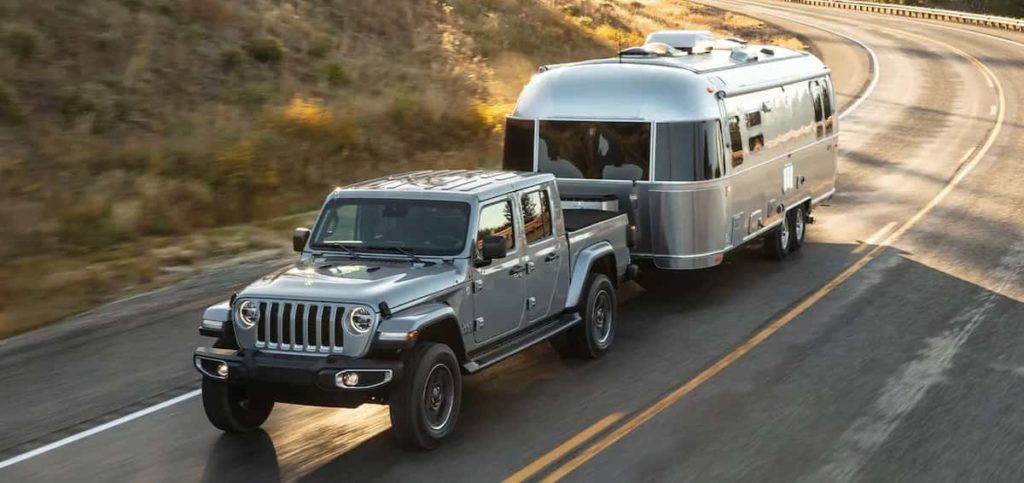
Reading the owner’s handbook on your car can help you learn how to flat tow properly. If you intend on flat towing in the upcoming, getting your RV completely ready and outfitted ahead of time will find things simpler to connect up your Jeep swiftly. But, before you get into the manual’s nitty-gritty and flat towing a jeep, here are a few basic towing recommendations to remember.
The significance of a dependable braking mechanism cannot be emphasized, particularly while towing. Check your RV’s brakes and investigate a supplementary braking system for increased assistance. In fact, additional braking devices are required by law in certain states for RVs. Although if your regime is not among them, it’s a smart option to be cautious.
Along with powerful brakes, you’ll like to check twice your Jeep and RV’s light indications are correctly synced when you start driving. Wiring connections with a 4-pin or 7-pin umbilical wire are typically included in towing systems.
It is essential to be able to converse with other motorists while your RV is going down to avoid a collision. If you’re unsure how to join the cables, employ an expert to make sure it’s completed correctly. Before going out for a tow, always give your fluorescent bulbs a quick test.
Flat Tow Vehicles: Pros And Cons
Pros
Consider the following benefits if you’re considering buying a flat trailer for your next RV trip:
- The tow may be hooked up and disconnected by a single person.
- Towing equipment is often less expensive than dolly towing apparatus.
- Most vehicle types are suitable with flat tow.
Cons
- Loading the trailer requires longer and may necessitate more work.
- You will still have to locate a spot to park the trailer both at home and on the job location.
- Flat trailers are substantially larger than dolly trailers as well as need a greater hauling capacity.
Now that you’re aware of what is flat towing, flat bed tow truck, and some tips on towing, let’s explore the features of the best flat tow vehicles.
What Are The Best Flat Tow Vehicles?
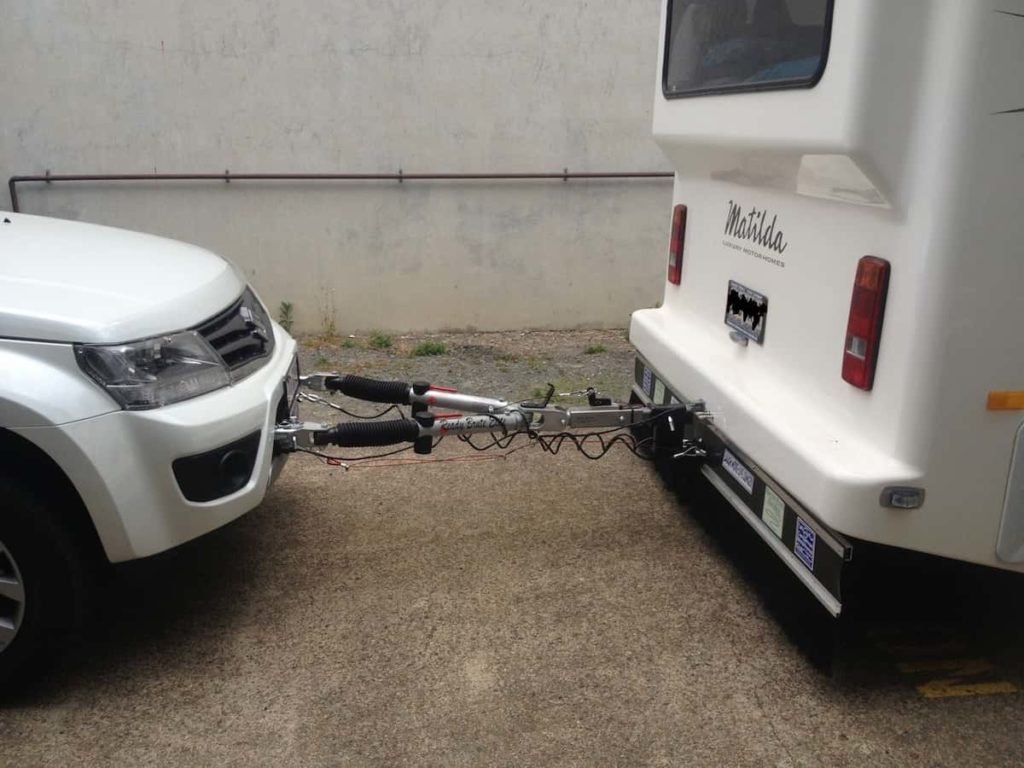
Cars, with the exception of trailers, are not meant to be dragged. The ability of your vehicle to be securely flat towed is determined by its model and supplier; there is no hot rule that can be applied to identify which automobiles are acceptable for flat towing.
Every automobile type has its unique gearbox and lubricating system, which determines whether it is legal to tow on its four tires. Like always, consult your owner’s handbook to see if your vehicle could be flat towed whatsoever.
Without any extra modifications, a rear-wheel-drive automobile with a manual transmission is considered to be a strong choice for flat towing.
Lubrication machines are required in some cars to maintain the driveshaft lubricated and working safely. Flat towing a car entails hauling it with the engine turned off, and these compressors will likewise be rendered inoperable. Flat towing a car can cause transmission harm if the drive shaft is not properly lubricated.
A few cars additionally include steering locks that prevent the front wheels from rotating while the engine is off. These vehicles, once again, cannot be flat towed.
Lastly, a car that cannot roll on four wheels on the highway cannot be flat towed. That implies that automobiles with stiff tire, axle, or suspension difficulties are unlikely to be flat towed, ruling out this strategy for retrieving flat tow vehicles with extensive harm to these parts.


